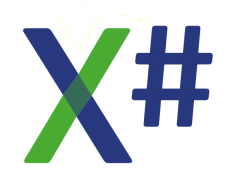We returned from the X# Summit yesterday.
It was very good to be back in Germany after more than 3 years and to meet our customers and friends.
Some of the announcements of this event:
- X# 3.0 will contain support for .Net 5,6 & 7 and will have breaking changes compared with X# 2. The codename for X# 3.0 is Γαία (Gaia)
- We are preparing for an X# Summit on March 30,31 2023 in Austin (TX)
- We are planning a next X# Summit in Memmingen on October 12,13 2023
Robert

